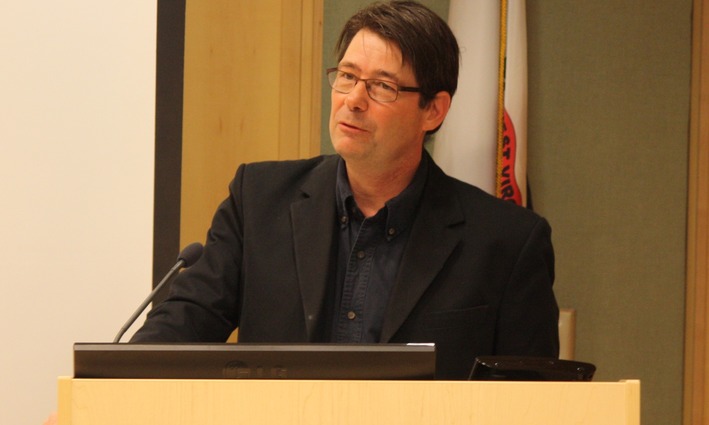Aart Holtslag, assistant professor of political science, was the final participant in this semester’s Faculty Research Forum. Holtslag presented his research pertaining to international norms in relation to land mines, small weapons and cluster munitions.
The established international practice of banning, regulating or limiting the use of these weapons (or any action) overtime develops into a norm, according to Holtslag.
When considering the use of weapons, the international community typically assesses the humanitarian cost in relation to the boost to the state’s security. Holtslag cited 1984 as the year in which theorists began discussing and pushing the international community to eliminate certain practices of war; these eventually developed into norms.
Holtslag further pinpointed a conference at The Hague just before the start of the 20th century as “the first place where humanitarian limitations [to weapons] were first discussed” by international policy makers. The states involved agreed to eliminate the use of certain gases as well as the use of balloons to drop bombs.
After the Geneva Conventions, three norms of humanitarian conflict were established: the unacceptability of unnecessary suffering; the distinction of a military combatant from a civilian; and the proportionality of civilian damage versus military damage. Holtslag described these as exceptionally important benchmarks for further humanitarian discussions.
Holtslag’s research applies the mentioned humanitarian norms to specific actions, treaties and violations in recent history. He identified the 1990s and early 2000s as a major period of transition toward arms negotiations.
In 1997, 137 states, according to Holtslag, signed a treaty banning the use of landmines due to their indiscriminate damage to soldiers as well as civilians. Three of the world’s most powerful states—China, Russia and the United States—refused to sign. In his presentation, Holtslag said the United States refused to sign because the government felt landmines were instrumental in the protection of the demilitarized zone between North and South Korea. Conversely, Canada, Australia, the Netherlands and Switzerland were very active in pushing the treaty forward.
Holtslag’s second area of focus was small arms and light weapons. He described these as the most deadly element of war, killing approximately 80 percent of those who die in war.
Efforts toward limiting their use and production has largely been unfruitful due to the determination that the need for their use to bolster security outweighs the human cost. Holtslag did identify the resale of these weapons to non-military actors as their most dangerous aspect, versus their actual use in combat.
The third and final area discussed was cluster munitions. Holtslag described the international community’s move to ban their use as quick and a “no-brainer.” Their indiscriminate killing demonstrates a severe contravening of humanitarian norms established at the Geneva Conventions.
During the question-and-answer portion, Adam Oester, a junior communications major, asked Holtslag if he believed any efforts to ban or regulate the use of drones was on the horizon. Holtslag responded with the fact that they are still so new and that officially only the United States possesses them as reasons why no action has yet been taken.
He did speculate that China, Russia and Iran probably have them, too. Further, Holtslag believes once the realization of their indiscriminate choice of targets sinks in, moves may be taken to ban their use.
Ann Watson, dean of the library, asked Holtslag why gases, such as mustard gas, were banned, yet still used during World War I and beyond.
Holtslag acknowledged the use of these gases did contravene established and accepted norms, but noted that the treaties “had almost no teeth” at that time.

